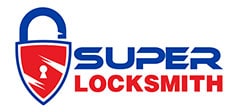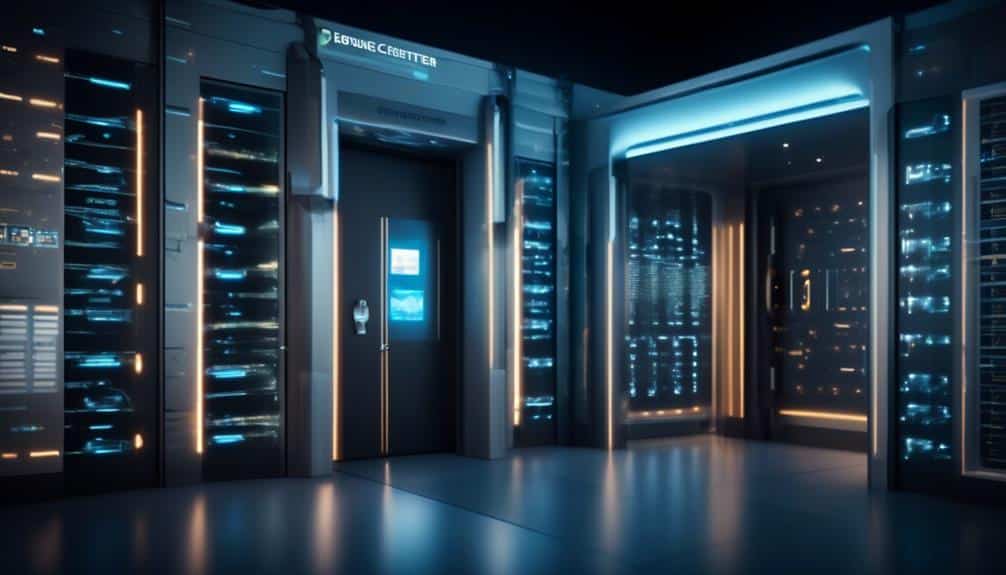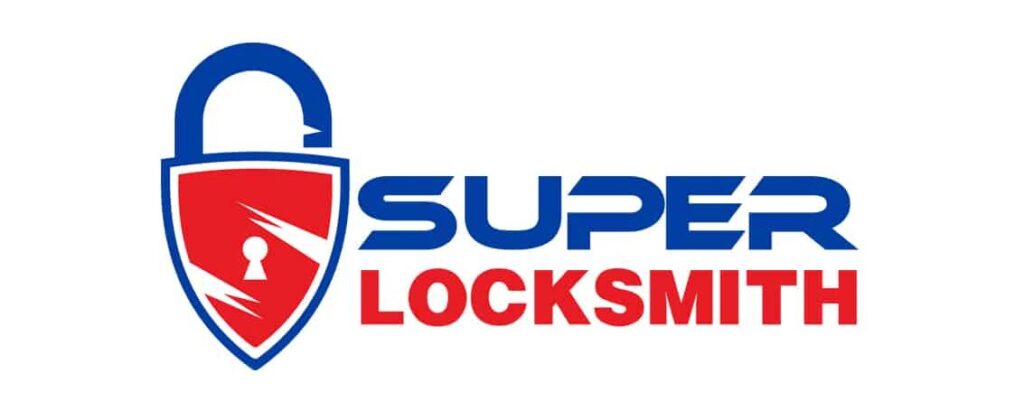In today's ever-evolving world of data centers, security and simplicity are paramount. We all want to ensure that our data is protected and accessible only to authorized individuals.
But how can we achieve this in a way that is efficient and user-friendly? Look no further. In this discussion, we will explore 13 key solutions that not only secure your data center access, but also simplify the process for everyone involved.
From enhanced security measures to streamlining access control, we have the answers you've been searching for.
So, buckle up and get ready to discover the future of data center security.
Importance of Master Key Systems

Master key systems play a crucial role in ensuring efficient and secure access to data centers. When it comes to data center security, master key systems are designed to address specific concerns and provide key benefits, such as enhanced security and convenience.
One of the main security concerns with master keys is the risk of unauthorized access. With traditional key systems, if a master key falls into the wrong hands, it can compromise the entire security of the data center. However, modern master key systems incorporate advanced encryption and authentication methods to mitigate this risk. By using electronic access control systems, data centers can implement keyless access, eliminating the need for physical keys altogether.
The benefits of keyless access are numerous. Firstly, it eliminates the need for keys, which can be lost, stolen, or duplicated. This significantly reduces the risk of unauthorized access.
Secondly, keyless access allows for more granular control over who can access different areas within the data center. With traditional keys, it's difficult to manage and track individual access.
Lastly, keyless access enables easier and more efficient access management. Access can be granted or revoked remotely, saving time and resources.
Enhanced Security With Master Key Systems
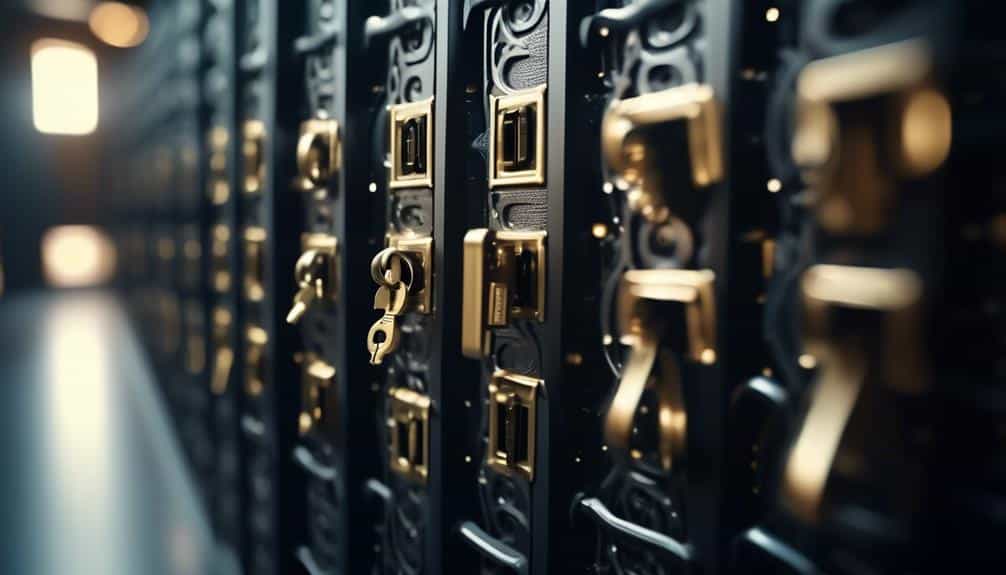
Implementing master key systems enhances the security of data centers by incorporating advanced encryption and authentication methods to mitigate the risk of unauthorized access. With the increasing complexity of data center environments, it's crucial to address the challenges that come with implementing and maintaining a master key system.
Here are some key challenges that organizations may face during master key system implementation:
- Integration complexity: Integrating a master key system into an existing infrastructure can be challenging due to the need for compatibility and seamless integration with various access control solutions.
- Key management: Managing and safeguarding the master key is critical to prevent unauthorized duplication or access. Organizations need to establish robust key management policies and procedures.
- System scalability: As data centers grow, it's essential to ensure that the master key system can scale accordingly to accommodate additional access points and users.
To effectively maintain a master key system, consider the following tips:
- Regular audits: Conduct regular audits to ensure all access points are accounted for and properly secured.
- Key rotation: Implement a key rotation schedule to mitigate the risk of compromised keys.
- Employee training: Train employees on proper key handling procedures and security best practices.
Key Benefits of Implementing Master Key Systems
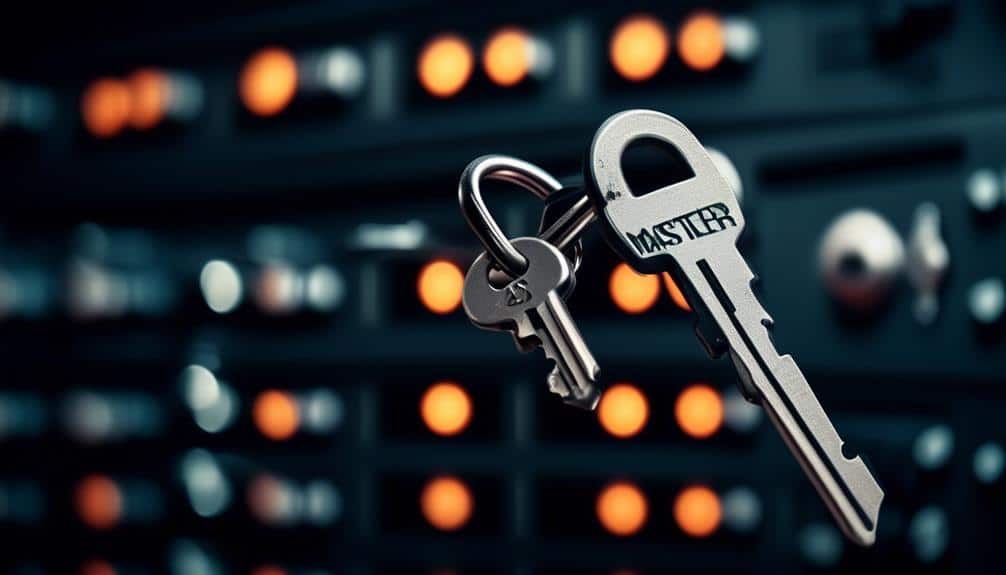
By implementing master key systems, organizations can significantly enhance the security and efficiency of their data center access. Master key systems provide numerous benefits and advantages that make them an essential solution for managing access to sensitive areas within the data center.
One of the key benefits of implementing master key systems is increased security. With a master key system, organizations can control and restrict access to different areas of the data center. This ensures that only authorized personnel can enter specific areas, minimizing the risk of unauthorized access and potential security breaches.
Another advantage of master key systems is improved efficiency. By using a single master key to access multiple locks, authorized personnel can easily move throughout the data center without the need for multiple keys. This saves time and eliminates the hassle of carrying and managing multiple keys, resulting in increased productivity and streamlined access management processes.
Additionally, master key systems offer flexibility and scalability. Organizations can easily add or remove locks from the system as their access needs change. This adaptability allows for seamless integration with existing access control systems and ensures that the data center can accommodate future growth and expansion.
Overall, the implementation of master key systems brings significant benefits to organizations, including enhanced security, improved efficiency, and flexibility. It is a cost-effective solution that simplifies access management and reinforces the overall security posture of the data center.
| Benefits of Implementing Master Key Systems |
|---|
| Increased security |
| Improved efficiency |
| Flexibility and scalability |
| Enhanced access management and overall security |
| Cost-effective solution for data center access |
Simplifying Access Control With Master Key Systems
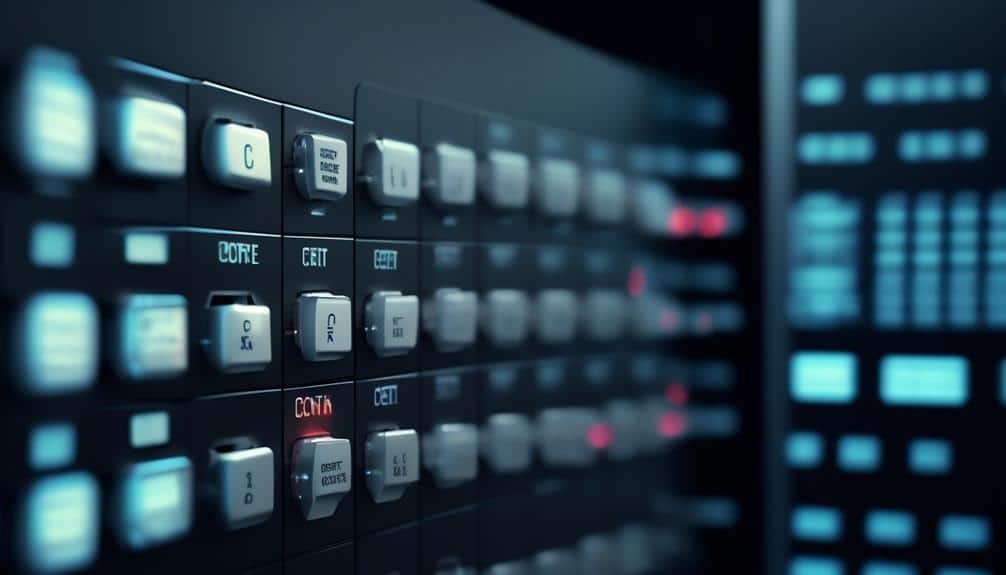
Simplifying access control becomes effortless with the implementation of master key systems, as they streamline the process and enhance overall efficiency. Master key systems offer several benefits that help organizations effectively manage access control while reducing complexity.
Here are some key benefits of using master key systems:
- Versatility: Master key systems allow for hierarchical access control, where different levels of access can be granted to individuals or groups. This flexibility enables organizations to easily manage access rights across various areas within a data center.
- Enhanced Security: With a master key system, administrators can have better control over who can access specific areas. This helps in preventing unauthorized access and ensures that only authorized personnel have access to sensitive areas within the data center.
- Simplified Management: By using a master key system, organizations can simplify the management of access control. Instead of having multiple keys for different areas, a single master key can be used, reducing the number of keys that need to be managed.
However, implementing and managing master key systems also come with their own set of challenges:
- Key Management: As the number of keys increases, managing and keeping track of them can become a challenge. Organizations need to have robust key management processes in place to ensure that keys are properly controlled and accounted for.
- Potential Security Risks: If a master key falls into the wrong hands, it can pose a significant security risk. Organizations need to have strict protocols in place to safeguard master keys and prevent unauthorized duplication.
- Complexity: Master key systems can be complex to design and implement, especially in larger data centers with multiple access points. Proper planning and coordination are essential to ensure that the system is effective and efficient.
Streamlining Data Center Security With Master Key Systems

With the benefits and challenges of master key systems in mind, let's now explore how these systems can streamline data center security.
Streamlining access management in data centers is crucial to ensure the protection of sensitive information and prevent unauthorized access. Master key systems provide a centralized solution for managing access control, simplifying the process for administrators and enhancing security measures.
One key advantage of master key systems is their ability to streamline access management. With a master key, administrators can efficiently grant or revoke access to different areas within the data center. This eliminates the need for multiple keys and allows for easier tracking and control of who's access to specific areas. By implementing key control measures, such as restricted duplication and key tracking, administrators can further enhance security and prevent unauthorized key duplication.
Master key systems also simplify the process of granting temporary access to contractors or service providers. Instead of issuing multiple keys or rekeying locks, administrators can use a master key to grant temporary access to specific areas as needed. This reduces administrative overhead and improves overall efficiency.
Key Components of an Effective Master Key System

An effective master key system consists of several key components that work together to enhance security and streamline access management in data centers. Implementing effective master key systems requires careful consideration of these components:
- Key Hierarchy: Establishing a clear hierarchy of keys is crucial for effective access control. This involves assigning different levels of access to different keys, allowing authorized personnel to access specific areas while ensuring restricted areas remain secure.
- Locking Mechanisms: Choosing the right locking mechanisms is essential to ensure the integrity of the master key system. High-quality locks that are resistant to tampering and picking should be used to prevent unauthorized access.
- Key Management Software: Utilizing key management software simplifies the administration and tracking of keys within the master key system. This software allows for easy assignment and revocation of access rights, as well as providing audit trails to monitor key usage.
Best Practices for Implementing Master Key Systems

Implementing master key systems requires careful planning and consideration of best practices to ensure optimal security and efficient access management in data centers. However, there are certain challenges that organizations may face during the implementation process.
One of the main challenges is the complexity of the system itself. Master key systems involve a hierarchy of keys and locks, which can be difficult to manage and maintain. It's important to have a clear understanding of the system's structure and ensure that it aligns with the organization's access requirements.
Another challenge is the need for ongoing maintenance. Regular inspections and maintenance of the key system are crucial to ensure its proper functioning and longevity. This includes checking for any signs of wear and tear, lubricating the locks, and replacing any damaged keys or locks.
To overcome these challenges, there are several best practices that organizations should follow. Firstly, it's essential to involve key stakeholders in the planning and implementation process to ensure that all requirements and concerns are addressed.
Secondly, organizations should invest in high-quality, durable locks and keys that can withstand the demands of a data center environment.
Lastly, regular training and education should be provided to employees to promote awareness and responsible use of the master key system.
Choosing the Right Master Key System for Your Data Center
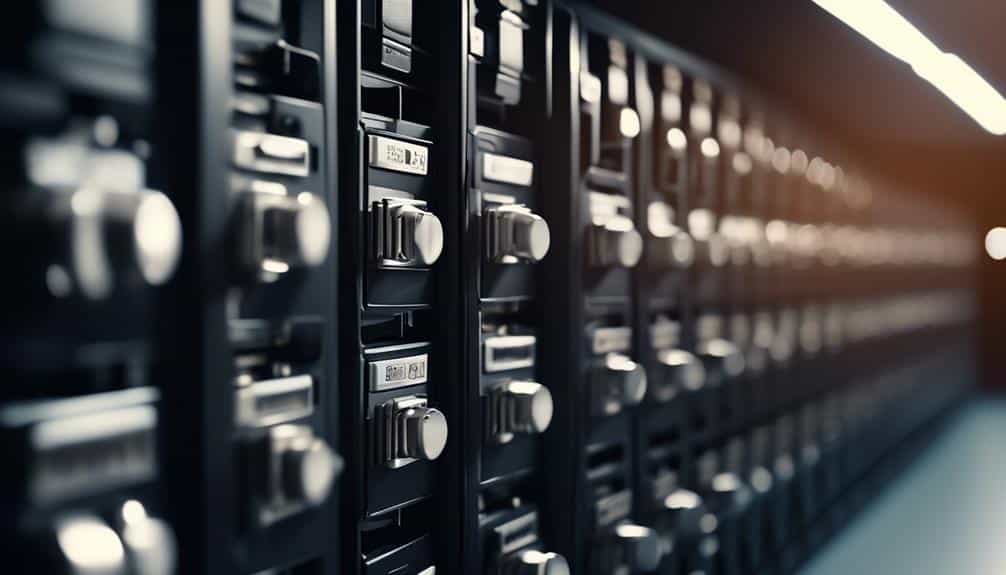
When selecting a master key system for your data center, it's crucial to consider factors such as security requirements, scalability, and ease of maintenance. Making the right choice is essential for ensuring efficient and secure access control in your data center environment. Here are some key considerations to keep in mind:
- Security requirements: Evaluate the level of security needed for your data center. Consider factors such as the sensitivity of the data, compliance requirements, and potential threats. Choose a master key system that offers robust security features, such as strong encryption and tamper-proof mechanisms.
- Scalability: Your data center may grow and evolve over time, so it's important to choose a master key system that can scale accordingly. Look for systems that support a large number of keys and can easily accommodate future expansion without significant disruption.
- Ease of maintenance: Maintaining and managing the master key system should be efficient and hassle-free. Look for systems that offer centralized management capabilities, allowing you to easily add or revoke access privileges, track key usage, and generate audit reports.
Common Challenges in Managing Master Key Systems

Managing master key systems can present various challenges that organizations need to address in order to ensure effective access control and security in their data centers. One common challenge in managing access control is the complexity of the system itself. With multiple levels of access, different permissions, and varied user roles, it can be difficult to maintain a centralized and organized approach to key management.
Additionally, ensuring that only authorized individuals have access to specific areas can be a challenge, especially in large data centers with a high number of employees and visitors.
Another challenge is the risk of key duplication. Without proper controls and monitoring, unauthorized individuals can easily duplicate keys, compromising the security of the data center. It's crucial for organizations to implement strict policies and procedures to prevent unauthorized key duplication and regularly audit the key inventory to identify any discrepancies.
Furthermore, managing and tracking the lifecycle of keys can be a daunting task. From issuance to revocation, it's important to keep track of key ownership and ensure that keys are returned when no longer needed or when an employee leaves the organization. This requires a robust key management system that enables efficient tracking and reporting.
Integrating Master Key Systems With Existing Security Measures
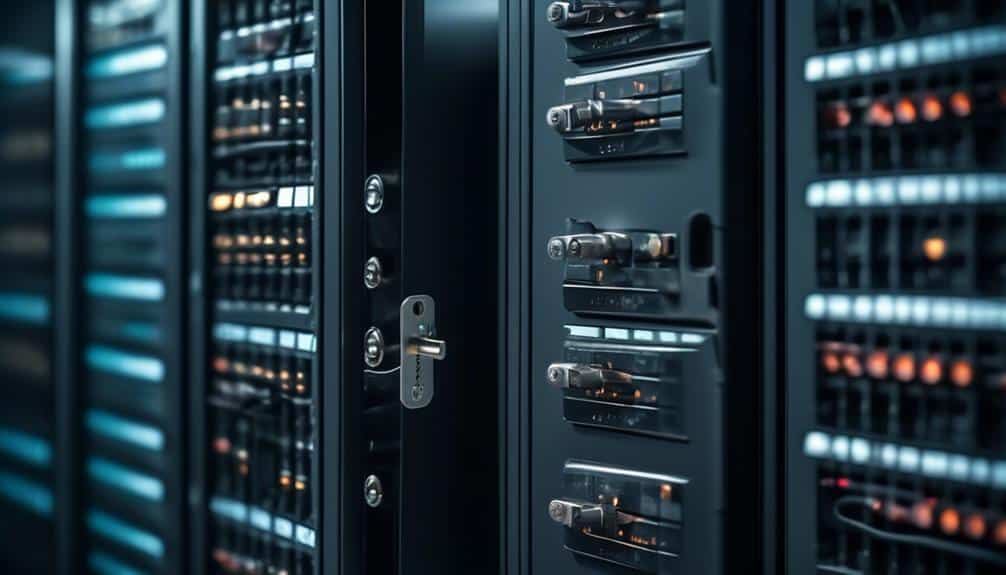
To effectively integrate master key systems with existing security measures, organizations must carefully evaluate their current infrastructure and develop a comprehensive plan. By seamlessly integrating master key systems with existing access control measures, organizations can enhance their overall security posture and streamline access management processes.
Here are three key considerations when integrating master key systems with existing security measures:
- Evaluate existing access control measures: Before integrating master key systems, organizations should assess their current access control measures to identify any gaps or weaknesses. This evaluation should include a thorough review of physical access controls, such as locks, key cards, and biometric systems, as well as digital access controls like passwords, authentication protocols, and encryption.
- Ensure compatibility and scalability: When integrating master key systems, it's crucial to ensure compatibility and scalability with existing security measures and future expansion plans. This involves selecting master key systems that can seamlessly integrate with existing infrastructure, such as lock cylinders and electronic access control systems, and can accommodate future changes and upgrades.
- Establish clear policies and procedures: To successfully integrate master key systems, organizations need to establish clear policies and procedures that govern access management. This includes defining who's access to master keys, implementing strict key control measures, and regularly auditing and monitoring access to ensure compliance with security policies.
Integrating master key systems with existing security measures requires careful planning and consideration. By following these key steps, organizations can effectively enhance their access control capabilities and strengthen their overall security posture.
Case Studies: Successful Implementation of Master Key Systems
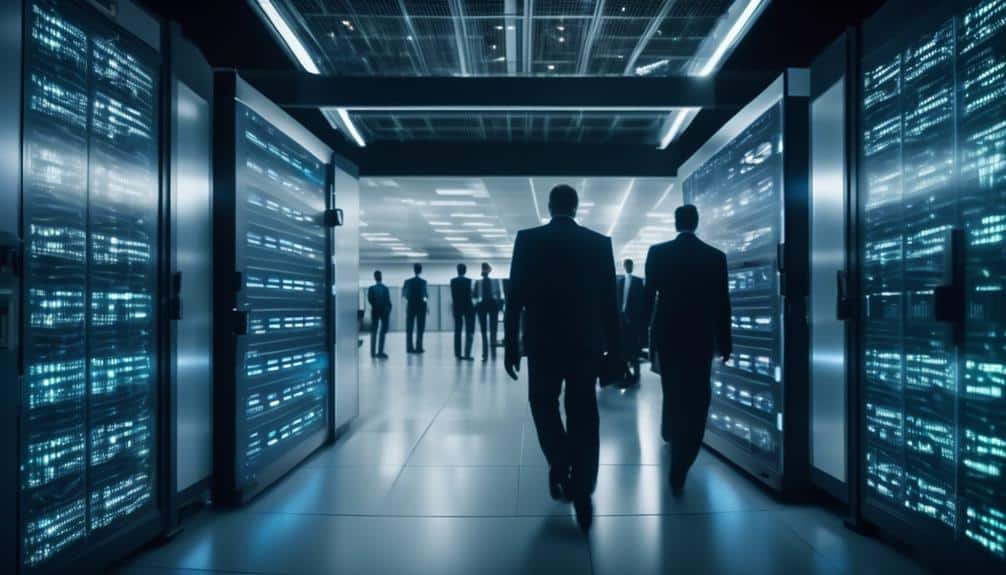
Now let's examine real-life examples and success stories of implementing master key systems in data centers.
These case studies provide valuable insights into how organizations have successfully integrated master key systems into their existing security measures.
Real-life Examples
In successful implementations of master key systems, real-life examples demonstrate the efficacy and practicality of these solutions. Here are three implementation success stories that highlight the benefits of using master key systems in data centers:
- Company A: By implementing a master key system, Company A was able to streamline access control for their data center, reducing the risk of unauthorized entry and increasing security. The system allowed them to assign unique keys to different levels of personnel, ensuring that only authorized individuals had access to specific areas.
- Company B: With the implementation of a master key system, Company B was able to simplify their access management process. They no longer needed to distribute multiple keys to different employees, as a single master key provided access to all authorized areas. This not only saved time but also improved overall security.
- Company C: By utilizing a master key system, Company C enhanced their data center's security while maintaining ease of access. The system allowed them to grant temporary access to contractors or visitors without compromising the integrity of their security protocols.
These real-life examples highlight the successful implementation of master key systems in data centers, showcasing their effectiveness in improving security and simplifying access control processes.
Implementation Success Stories
Having examined real-life examples of successful implementations of master key systems in data centers, we can now explore the case studies that showcase the effectiveness and practicality of these solutions.
Implementing master key systems in data centers can present various challenges, such as coordinating access across multiple levels of security and ensuring proper key management. However, successful implementation can lead to significant benefits, including enhanced security, streamlined access control, and improved operational efficiency.
One case study involved a large data center that implemented a master key system to address their access control needs. The implementation process faced challenges, such as integrating the system with existing security infrastructure and training staff on the new procedures. However, through careful planning and collaboration with the key system provider, these challenges were overcome.
Lessons learned from this case study include the importance of thorough planning, effective communication, and ongoing training to ensure a successful implementation of master key systems in data centers.
Key Considerations for Maintaining Master Key Systems
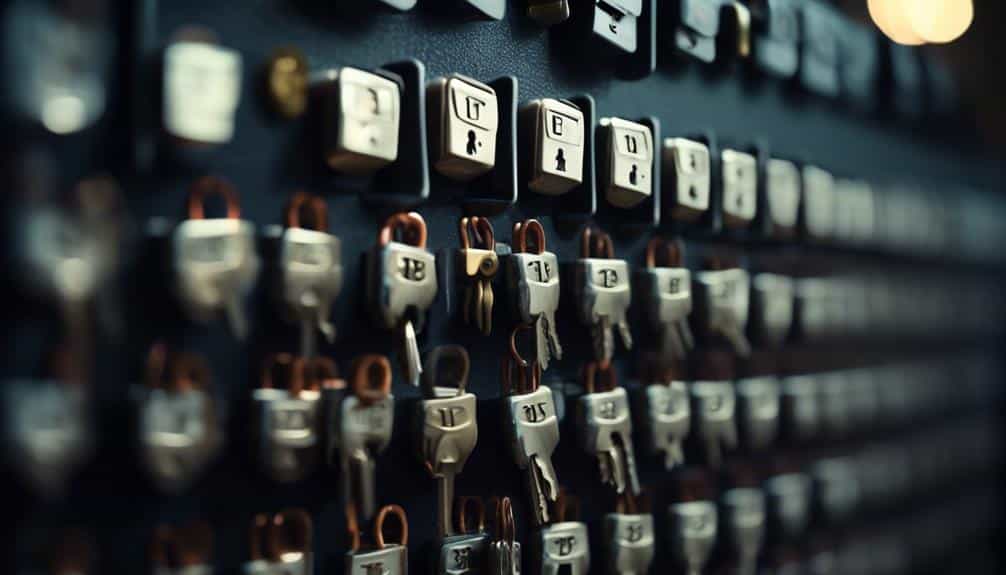
When it comes to maintaining master key systems, there are several key considerations that we need to keep in mind.
First and foremost, we must prioritize key system maintenance to ensure its optimal functionality and longevity. This involves regular inspections, lubrication, and cleaning of key components.
Additionally, implementing security best practices, such as controlling access to master keys and regularly updating key codes, is crucial in maintaining the integrity and security of the system.
Key System Maintenance
To effectively maintain master key systems, it's crucial to consider key considerations and implement appropriate maintenance strategies. Here are some key factors to keep in mind when maintaining master key systems:
- Regular inspections: Conduct routine inspections to identify any signs of wear and tear or potential issues with the key system.
- Key system updates: Stay updated with the latest advancements in key system technology to ensure optimal security and functionality.
- Key duplication control: Implement strict controls and protocols for key duplication to prevent unauthorized access and maintain the integrity of the key system.
Security Best Practices
As we delve into the topic of security best practices, it is imperative to consider key considerations for maintaining master key systems, ensuring optimal security and functionality. One of the crucial aspects to address is data center encryption, which plays a critical role in protecting sensitive information. Implementing robust encryption algorithms and key management systems enhances the security of data at rest and in transit within the data center. Additionally, network security should be a top priority, as it safeguards against unauthorized access and data breaches. Deploying firewalls, intrusion detection systems, and implementing secure network protocols are essential measures to fortify the network perimeter. To further enhance security, regular audits and vulnerability assessments should be conducted to identify any potential vulnerabilities and mitigate them promptly.
| Best Practices for Maintaining Master Key Systems | ||
|---|---|---|
| Regularly update encryption algorithms | Implement | robust key |
| and key management systems | rotation | management |
| Secure sensitive keys with strong authentication | Implement | secure key |
| mechanisms | access controls | management |
| Conduct regular audits and vulnerability | Perform regular | vulnerability |
| assessments | audits | assessments |
| Employ network segmentation to limit | Implement | network |
| unauthorized access | network | segmentation |
| Train employees on security best practices | Provide | ongoing |
| and ensure compliance | training | compliance |
Future Trends in Master Key Systems for Data Centers
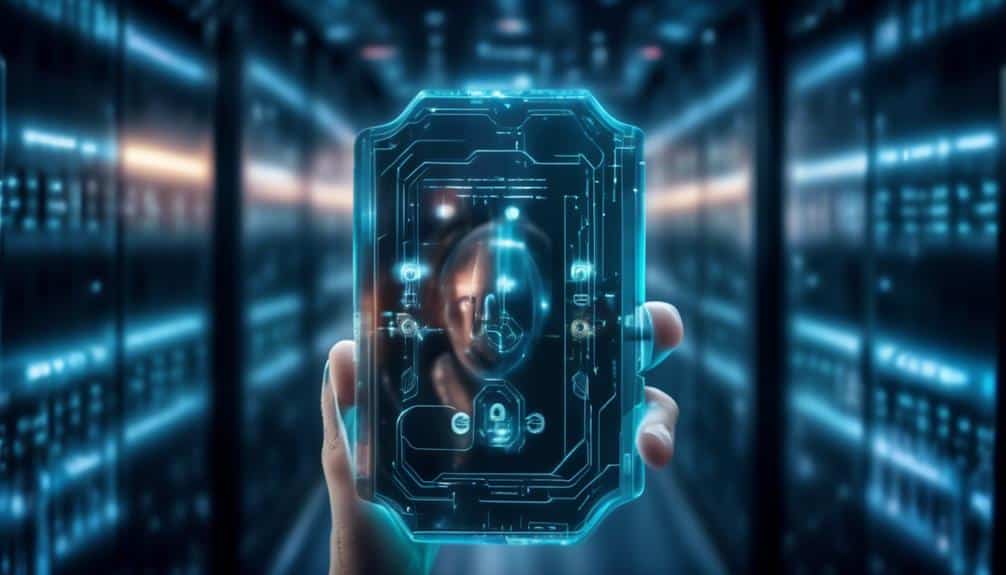
We anticipate emerging trends in master key systems for data centers. As technology continues to advance, data centers are faced with the challenge of securing their infrastructure while maintaining efficiency and convenience for authorized personnel. Here are some future advancements and emerging technologies that can shape the future of master key systems:
- Biometric authentication: Implementing biometric authentication in master key systems can provide an additional layer of security by using unique physical or behavioral characteristics, such as fingerprints or facial recognition, to verify the identity of individuals accessing the data center.
- Mobile-based access control: Leveraging mobile devices as access credentials can simplify the management of master key systems. By using mobile applications, administrators can easily grant or revoke access privileges, track access logs, and receive real-time notifications.
- Artificial intelligence and machine learning: Integrating AI and machine learning algorithms into master key systems can enhance security by continuously analyzing access patterns and identifying anomalies. This can help detect and prevent unauthorized access attempts in real-time.
These advancements in master key systems have the potential to significantly improve the security, convenience, and efficiency of data center access.
As technology continues to evolve, it's crucial for data centers to stay informed and adapt their master key systems to meet the ever-changing security challenges.
Frequently Asked Questions
Can Master Key Systems Be Integrated With Existing Security Measures in a Data Center?
Yes, master key systems can be integrated with existing security measures in a data center. By incorporating master key systems, we can maximize access control efficiency and enhance overall security.
These systems allow for centralized management and administration of keys, providing a streamlined approach to granting and revoking access.
With the integration of master key systems, data centers can ensure a higher level of security and simplify the management of access control.
What Are the Key Components of an Effective Master Key System?
When implementing master key systems, the key components for effectiveness include:
- A secure and robust key management process
- Hierarchical key structure
- Strict access control policies
Master key systems provide numerous benefits such as:
- Simplified access control
- Reduced key management complexity
- Enhanced security
How Can Master Key Systems Simplify Access Control in a Data Center?
Simplifying access control in a data center can be achieved through the implementation of a master key system. This solution enhances security measures by providing a centralized and efficient way to manage access to different areas within the facility.
With a master key system, authorized personnel can easily navigate through the data center, while unauthorized individuals are prevented from gaining entry. This streamlined approach not only simplifies access control but also ensures the highest level of security for the data center.
What Are the Common Challenges in Managing Master Key Systems?
Key challenges in managing master key systems include:
- Maintaining the integrity of the system,
- Ensuring proper key control, and
- Managing access rights.
Best practices for implementing master key systems involve:
- Creating a detailed key hierarchy,
- Regularly auditing the system, and
- Implementing strict key control policies.
What Are the Future Trends in Master Key Systems for Data Centers?
Future innovations in master key systems for data centers are being driven by emerging technologies. As technology advances, we can expect to see more sophisticated encryption algorithms and biometric authentication methods being integrated into these systems.
These innovations will enhance the security and simplify access to data centers, ensuring that only authorized personnel can enter. By leveraging the power of emerging technologies, data centers can stay ahead of the curve and protect valuable information from potential threats.
